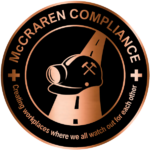First published by Safety+Health an NSC publication.

Safety walkarounds demonstrate an employer’s commitment to safety and allow managers to see for themselves how effective their safety and health management program is, OSHA says in a fact sheet from its Safe + Sound campaign.
Walkarounds can be broken down into three parts: pre-inspection, onsite inspection and post-inspection.
Pre-inspection
- Plan to focus your inspections on areas where hazards have been identified. Check to see if previously identified hazards have been abated or if further action is needed.
- If your workplace has a safety committee, schedule a pre-inspection meeting and invite workplace safety representatives as well as other managers and supervisors to get their perspective on the worksite’s safety issues.
- Determine what safety equipment you’ll need to conduct the inspection.
- Lead by example: Wear appropriate personal protective equipment.
Onsite inspection
Look for easily observable hazards first, such as:
- Tripping hazards
- Blocked exits
- Frayed/exposed electrical wires
- Missing machine guards
- Poor housekeeping
- Poorly maintained equipment
During the inspection, talk to employees at their workstations. They’re the ones likely to know the most about the hazards. Encourage conversation by asking open-ended questions such as, “What’s the most hazardous task in your job? What makes it hazardous?” and “If you’ve been injured, what was the injury and how did it happen?”
Another important part of an inspection is observing workers as they perform their job. Do they lift heavy objects? Do they stand/sit in awkward postures? Are they performing repetitive motions? If so, take notes and photos. “Try to find solutions for hazards while you are conducting the inspection by applying your own creativity and inspiring the creativity of workers,” OSHA recommends.
Post-inspection
Soon after the inspection, prepare an abatement plan containing a list of the hazards found, corrective actions needed and a timeline for implementation. “Some complex hazards may require further evaluation, study, or engineering work to design and implement appropriate controls,” OSHA cautions.
Share the abatement plan with managers, supervisors and workers, and track progress by sharing or posting periodic updates to the plan.
McCraren Compliance offers many opportunities in safety training to help circumvent accidents. Please take a moment to visit our calendar of classes to see what we can do to help your safety measures from training to consulting.


